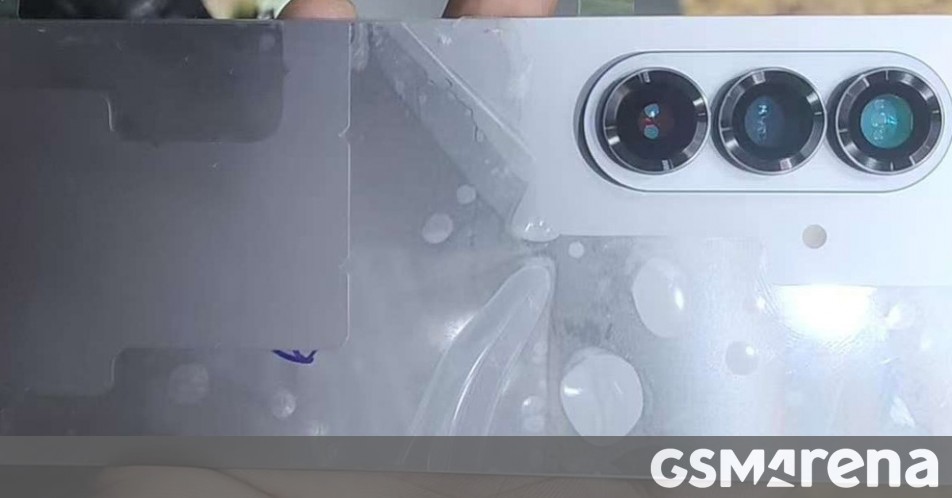Samsung is set to launch three foldable devices in early July: the Galaxy Z Fold7, Z Flip7, and Z Flip7 FE, with mass production reportedly underway. Recent leaked images purportedly show the Z Fold7’s backside, revealing a vertical triple-camera setup but no details on its edge-to-edge cover display or thinness of 3.9mm. The Z Fold7 is expected to measure 158.4 x 143.1 x 3.9 mm and feature the Snapdragon 8 Elite globally, while the Z Flip7 may use different processors depending on the region. Details on the Z Flip7 FE remain scarce, suggesting it might utilize the older Exynos 2400.
To recap, Samsung is set to unveil three foldable devices in early July: the Galaxy Z Fold7, Z Flip7, and Z Flip7 FE. Reports indicate that mass production is already in progress, so it’s no surprise that we’re starting to see product leaks emerge online.
Supposed Samsung Galaxy Z Fold7. https://t.co/OaSv4CQLTN#Samsung #GalaxyZFold7 pic.twitter.com/jZNisCUNq9
— Piyush Bhasarkar (@TechKard) May 23, 2025
The image in question reportedly shows the back of the Z Fold7. This angle is arguably the least exciting, as it doesn’t showcase its purported new edge-to-edge cover display or its impressively thin profile of just 3.9mm. We also miss out on the significantly reduced bezels of the inner display. What we see is merely the back with a familiar vertical triple-camera setup. It could even be a dummy unit, possibly just one half of the device. Nevertheless, it provides an initial glimpse of the device in the wild. Moreover, the original Weibo source seems to have disappeared, adding a hint of credibility to this leak.
In terms of measurements, we anticipate the Z Fold7 will be 158.4 x 143.1 x 3.9 mm. Additionally, we believe it will feature the Snapdragon 8 Elite processor globally, which isn’t guaranteed for the other foldable models. The Z Flip7, for instance, is expected to utilize the Snapdragon 8 Elite only in North America and China, while relying on the Exynos 2500 in other regions. As for the elusive Z Flip7 FE, little is known so far, but it’s presumed to use the older Exynos 2400.
Source
